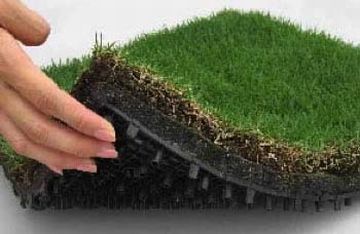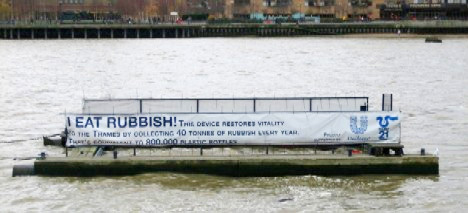 Don’t you hate it when you work out your whole renewable energy roundup and then accidentally delete the whole witty thing right before you click publish? I know I do. So you will have to take my word for it but, what I just wrote was wonderful. While I curse my over zealous clicking finger you can read this weeks (2nd) renewable energy roundup. We will be taking a renewable trip around the world (in way less than 80 days) to bring you stored wind energy in Iowa, green roofs from Japan, and A garbage eating monster from England. Lets go!
Don’t you hate it when you work out your whole renewable energy roundup and then accidentally delete the whole witty thing right before you click publish? I know I do. So you will have to take my word for it but, what I just wrote was wonderful. While I curse my over zealous clicking finger you can read this weeks (2nd) renewable energy roundup. We will be taking a renewable trip around the world (in way less than 80 days) to bring you stored wind energy in Iowa, green roofs from Japan, and A garbage eating monster from England. Lets go!
So what do you do when you have extra wind energy but no one to use it? Well the good people at the Iowa Association of Municipal Utilities has found a way to store all that sweet sweet wind. It’s going to store it all underground. Using compressed air to store extra energy is nothing new, but this will be the first time that it is being used in a porous sandstone layer rather than a mine shaft.
The idea is that you use wind energy generated at non-peak time (at night, or during heavy wind storms) to compress air underground. You can then use this compressed air later to co-power a gas turbine. Besides getting some good use out of that otherwise wasted wind energy you are always more than halving the amount of natural gas used. You are also able to offer wind energy to customers when the wind is not blowing. A win win for everyone. Check out the ISEP (Iowa Stored Energy Park) website for more stored air goodness.
“We found it!”
With those words, Dennis Fannin, General Manager of Osage Municipal Utilities and President of the Iowa Stored Energy Park Agency (ISEPA) officially announced the selection of a reservoir for the highly anticipated compressed air energy storage (CAES) facility spearheaded by IAMU. This facility, referred to as ISEP (Iowa Stored Energy Park), will join only two other underground energy facilities in the world using air pressure as the storage medium, making Iowa and IAMU a leader in the field. “This will not only capture the attention of the utility world, but the attention of the world in general,” said Michael McGill of Electricity and Air Storage Enterprises, LLC, a consultant for the ISEP project.
…
The ISEP storage structure would function much like an underground inverted “bowl” with the rim in water and acting as a seal, with the reservoir under an “oval” land parcel measuring approximately 8,000 feet x 6,000 feet; the reservoir will be about 2,800 feet deep at the crest and 2,900 feet deep at the edges.
We all like green buildings, they are clean use renewable energy and recycled materials, but what if you wanted a “really” green building. Like so green that you might need to mow it? Toyota Roof Garden to the rescue (site in Japanese).

The good people at green geek note.
Green roofs are a concept familiar to most people now, they’ve become very popular in recent years on many buildings. As with any environmental feature, there are costs associated with the installation and maintenance in order to enjoy the benefits of the green roof. This may change with a new product that makes adding a green roof as easy as laying carpet.
Toyota Roof Gardens, a subsidiary of the car company, has developed the TM9 self-watering turf mat; a system composed of 20 inch squares of grass on an irrigating base. The system is designed for building green roofs as easily as laying down carpet, and since the base layer connects directly to irrigation systems the mats are self watering. The unit is only 2 inches thick, which results in a reduced roof load compared to other types of green roof systems that contain a thicker soil layer. The grass itself is a special brand of Korean velvet grass that only needs to be cut once a year. The system has a price of US $43 per 20 inch square tile, which is still a bargain in terms of reduced installation and maintenance costs, as well as a cost savings if the building’s roof doesn’t need any structural upgrading to account for the increased weight of a conventional green roof.This system, as with all green roofs, provides a natural cooling effect as well as excellent thermal insulation for a building. Green roofs can also remove carbon dioxide from the air and supply oxygen, and are an excellent addition to any flat-roofed building. The TM9 turf mat would be an easy way to add a green roof to almost any building. It might even be possible to install the system inside, to make living carpet.
And Lastly (but not leastly) the people at Thames21have built themselves a giant garbage eating monster!

This bad boy is part of a nine monster fleet that scours up more than 40 tons (!!) of trash each year. Over the last year and a half it has picked up over 100 tons of trash and turned the Thames into one of the cleanest metropolitan rivers in the world. Way to go!
Thames21 is an environmental charity working with communities to bring London’s waterways to life. Thames21 mobilise thousands of volunteers every year to clean up waterside grot-spots, remove graffiti and create new habitats for wildlife. Innovative community inclusion and education projects like Adopt-A-River/Canal and Canalkeeper Volunteers inspire long-term change and run alongside frequent river clean ups which are open to all and organised by Thames21 with training and equipment provided.
Thames21 aim to transform neglected and littered waterways into areas that everyone can use and enjoy by encouraging all Londoner’s to treat their waterways with care and respect.
I love hearing stories about small groups of committed people making the world a better place.